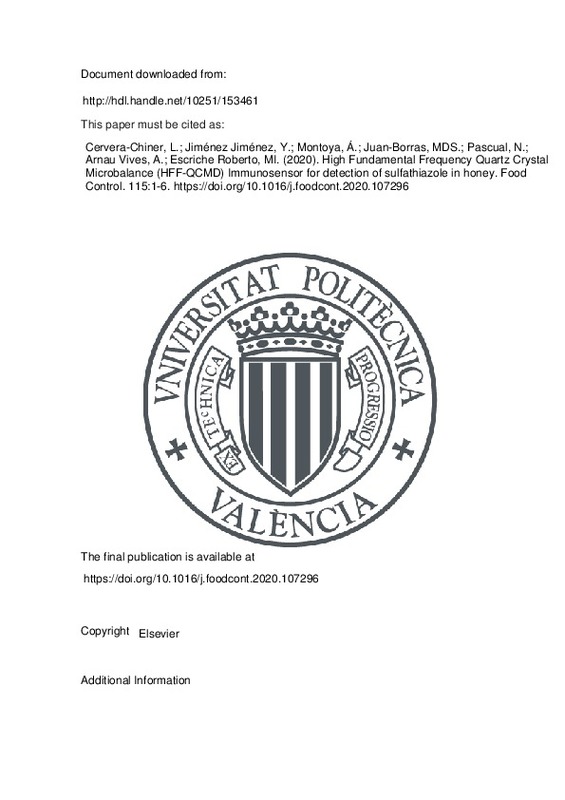JavaScript is disabled for your browser. Some features of this site may not work without it.
Buscar en RiuNet
Listar
Mi cuenta
Estadísticas
Ayuda RiuNet
Admin. UPV
Desde el lunes 3 y hasta el jueves 20 de marzo, RiuNet funcionará en modo de solo lectura a causa de su actualización a una nueva versión.
High Fundamental Frequency Quartz Crystal Microbalance (HFF-QCMD) Immunosensor for detection of sulfathiazole in honey
Mostrar el registro completo del ítem
Cervera-Chiner, L.; Jiménez Jiménez, Y.; Montoya, Á.; Juan-Borras, MDS.; Pascual, N.; Arnau Vives, A.; Escriche Roberto, MI. (2020). High Fundamental Frequency Quartz Crystal Microbalance (HFF-QCMD) Immunosensor for detection of sulfathiazole in honey. Food Control. 115:1-6. https://doi.org/10.1016/j.foodcont.2020.107296
Por favor, use este identificador para citar o enlazar este ítem: http://hdl.handle.net/10251/153461
Ficheros en el ítem
Metadatos del ítem
| Título: | High Fundamental Frequency Quartz Crystal Microbalance (HFF-QCMD) Immunosensor for detection of sulfathiazole in honey | |
| Autor: | Pascual, Nuria | |
| Entidad UPV: |
|
|
| Fecha difusión: |
|
|
| Resumen: |
[EN] In this study, a piezoelectric immunosensor based on High Fundamental Frequency Quartz Crystal Microbalance (HFF-QCMD) technology was developed for detection of sulfathiazole in honey. The biorecognition was based on ...[+]
|
|
| Palabras clave: |
|
|
| Derechos de uso: | Reserva de todos los derechos | |
| Fuente: |
|
|
| DOI: |
|
|
| Editorial: |
|
|
| Versión del editor: | https://doi.org/10.1016/j.foodcont.2020.107296 | |
| Código del Proyecto: |
|
|
| Agradecimientos: |
The Spanish Ministry of Economy and Competitiveness, with
FEDER-funds, has financially supported this work through the AGL
2013-48646-R project. Furthermore, authors are grateful for financial
support from the European ...[+]
|
|
| Tipo: |
|







![[Cerrado]](/themes/UPV/images/candado.png)


